“Deer in the headlights” is a popular idiom for good reason. There are as many as 2 million collisions between cars and animals every year in the United States, according to the Federal Highway Administration. The vast majority involve deer.
Making matters worse, deer populations are growing at the same time animal habitats are being encroached upon and displaced by development. This not only increases the risk of deer collisions, but also means they can occur just about anywhere, including cities and suburbs.
The chances of coming across a deer while driving increases in the fall, which coincides with deer hunting season. During these months, the animals are often on the move and inevitably wind up crossing roadways. Before you head out for your annual fall foliage road trips, study up on these tips to ensure you, your family and the wildlife stay safe.
Check for Signs
Maybe the most obvious but undoubtedly most helpful step is to be on the lookout for deer crossing signs. These are your primary reminders to be on alert, use caution and, if necessary, reduce your speed.
Deer crossing signs, depicted with a leaping stag, are placed by local towns and highway departments in areas known for high deer activity and/or where deer collisions have occurred in the past. They’re most often found in heavily wooded areas like parks and forests, as well as near water.
Consider the Time of Day
While we can never predict when a deer will jump out onto the road, we do know the time of day it’s most likely to happen. The animals are most active when they are grazing, which occurs during dawn and dusk. It’s also worth noting that because deer thrive during these hours, their eyes are well-adjusted to the dark, causing bright car headlights to temporarily blind them causing them to freeze in place.
Sunrise and sunset are also particularly difficult times of day to drive because the road may be dark, or the sun’s glare could be in your eyes.
It’s crucial to be particularly vigilant when you’re driving through deer country around these times. If possible, plan your travels for a different time of day.

Stop, Don’t Swerve
If a deer is in the road in front of your vehicle, you may be tempted to swerve around it. This, however, could make the situation much worse. Deer usually will move when they see a car coming, so swerving into another lane might just put you right back into the animal’s path. Additionally, you’ll increase the likelihood of losing control of your vehicle or crashing into another car.
Use Your Horn if You Must
Deer don’t want to see you any more than you want to see them. In fact, most large forest animals are actually quite timid and will run off at the first sight of a human. However, they may get too scared to flee and instead freeze in the middle of the road. When this happens, bring your car to a stop and give the animal a moment to move. If this doesn’t work, flick your headlights on and off a few times. Only use your car horn (in short bursts) as a last resort. The noise may cause a deer to get aggressive.
Watch for Herds
You’re driving down the highway when you spot a deer galloping across the road 100 feet ahead. You’ve avoided a potential collision and now you’re in the clear, right? Not so fast. Deer seldom travel alone. If you see one, there will almost always be others nearby. Once a deer crosses, check both sides of the roadway to make sure another one isn’t following.
Get more car safety tips.
37 Thoughts on “How to Avoid a Deer Collision”
Leave A Comment
Comments are subject to moderation and may or may not be published at the editor’s discretion. Only comments that are relevant to the article and add value to the Your AAA community will be considered. Comments may be edited for clarity and length.



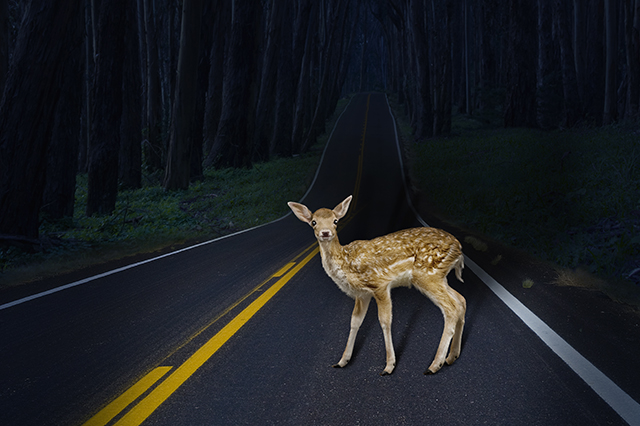
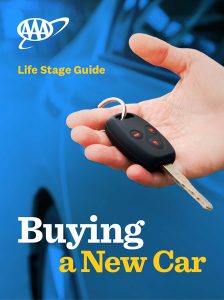
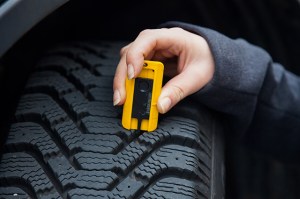
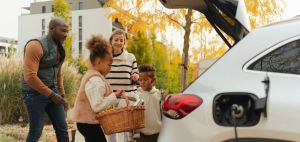
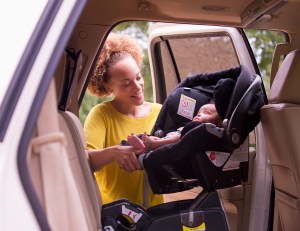



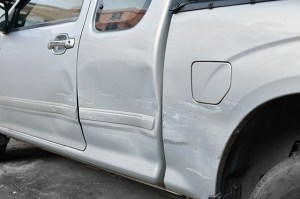
One evening, around 10pm, a deer ran into the side of my car in CO and was injured badly but was not dead. I did not have a cell phone and went home to call the police. The police on the phone told me to call a bird rescue organization. They said they were too far away and had ample food to feed injured wildlife. I called a friend who was a hunter and by the time we got back, the deer had died. Take care. It is a traumatic experience not only for the deer. PS The deer alert whistle you mention in the previous article must be quite irritating for dogs driving in these cars.
I have been working 2nd shift for the past 40+ years. I’ve had plenty of deer interactions. I would say three things have saved my butt all these years. Looking along the sides of the road for the headlights reflecting back from the deer’s eyes. Driving 45-50 MPH on the typical, two lane, curvy back roads we have here in NY. Stopping straight ahead.
I see many deer crossing I 95 in Rhode Island. I have noticed if the cars stop for them, they think all cars will stop and they get killed. I blow my horn at different lengths and it scares them and they go back into the forest.
I agree! I HATE it when drivers slow down and stop to allow deer to cross without concern…I feel it sets them up to not be afraid of cars and for the next time to be a disaster for some other driver(s). I always honk, flash my lights and even yell to scar them off the road. Good for you!
Fall is mating season for deer which can also result in them running across the road.
I have seen that between midnight and just before sunrise are the worse time for an encounter. Best advice is to leave early and drive much slower than the poster limit. This will allow BOTH you and the deer to react…
While driving at night constantly scan above the edges of the road your headlights just might light up the deer’s eyes before you reach it giving you time to slow or stop before a collision. Most times if you observe one deer there usually are others with it close by. Also, during severe winters use special caution especially on curvy roads, you just might encounter several deer in a heard in the roadway and along the side of roadways licking the road salt off the road. When their food is scarce during a very difficult winter the road salt is a source of nutrient that helps sustain them. Of course this could happen anytime during the winter, however more likely when the snow is frozen ‘solid’ deer are unable to dig to the bottom for food.
After a deer jumped on my front fender, the insurance agent who was immediately called advised that any fur be left in the grill and shattered lights as verification.
I have been told in the past that if you jam on the brakes but can’t avoid a hit, that its better to let up on the brakes just before contact so the hood of the car rises back up and less chance that the deer will slide up the hood into the windshield….any thoughts?
Yes, definitely a good move to let up on the brake just before you hit, for the reason you give.
Absurd myth. Brake as hard as possible.
I have purchased a set of small devices to be placed on either side of the car’s bumper that supposedly will make a very high pitched whisling noise that scares an animal that is in the road or it will prevent them deer from crossing into the road because of the noise it hears as you approach. My recollection is that they were relatively inexpensive but no way really to tell how effective they are. I never encountered a deer in the road when i was using the devices, but then that may have been nothing but luck. It would be interesting to see if anyone else uses such devices.
I have those whistles on all my cars an to date have not hit a deer but have seen them look at my car as I passed.
I have a few of them on the front of the car and have them for years. Birds move too when they hear it
People should put deer whistles in their front fenders. Only $10.00 and they work to scare off deer and other animals
Thanks for this, I buy one
Need better wildlife management (hunters or predators) and fewer Bambi lovers. Have hit two of them!
In Auburn MA I’ve seen deer slowly crossing back roads after midnight
Thank You Great tips!!
Thank you for pointing out that hunting is a possible cause of deer/car collisions as deer flee from hunters.
In my opinion deer hunters scaring deer into the road is very rare. The main reason in the fall that deer run across roads is because it’s mating season. The bucks will chase a hot doe all day; especially at evening, night, and dawn. A doe will run across streets avoiding the bucks until ready to breed. The bucks will cross streets in their continuous hunt for does. Notice after the breeding season there will be less deer crossing the roads. That is the main reason deer cross roads. It’s now getting close to that time in the Northeast so be careful.
Deer are spooked by hunters in the woods especially in the first few days of hunting!
Thank you , AAA , for pet safety tips for traveling. When I bring my cat to the doctor I put her in a carrier. I put part of the seat belt under her carrier. I loop part of the seat belt through the handle. I fasten the belt.
Earlier email address incorrect, should read junebug320@gnail.com
Very informative! I had no idea beeping your car horn could cause a deer to get aggressive.
Once had a deer that was spooked by a leaf lower jump over the guardrail right on to the hood of my car.
The phrase “deer in headlights” typically is used to describe a situation when someone is frozen out of fear and unable to move. So it’s interesting that putting on your headlights is actually encouraged to frighten them and get them to run away from your car, meaning that the phrase is wildly inaccurate?
Are deer less likely to hear an electric powered car approaching vs a gas powered one? If so how could an owner of an EV better equip the vehicle so that deer can hear or sense it’s approach?
As someone already mentioned, several deer whistles on the car would probably do the trick – it’s worth a try, they’re not expensive! That’s what I plan on doing on my new hybrid that’s extremely quiet.
High beams not so much headlights, you will most likely have your headlights on already at the time the deer are out which is usually dusk and dawn
Excellent advice. There are some deer in my local area and I have found that attaching the small and discreet “deer whistles” can help as well. As you drive it forces air into them and they release a high pitched sound at a frequency that only the deer can hear, thus giving them advanced warning something is approaching them.
do you recommend the deer whistle device affixed to the front of cars . I understand that they can warn deer an impending conflict
info online suggests NOT:Academics have not been impressed with deer whistle performance.
41 Action News’ sister station in Cincinnati interviewed an animal audiologist who worked on a 2003 study focused on the devices. Researchers tested six different whistles, finding deer can hear them, but it’s likely too late.
“The amount of road the car is covering per second, by the time the signal actually would have reached the deer, the car would have been close enough probably to strike the deer,” Dr. Peter Scheifele of the University of Cincinnati said.